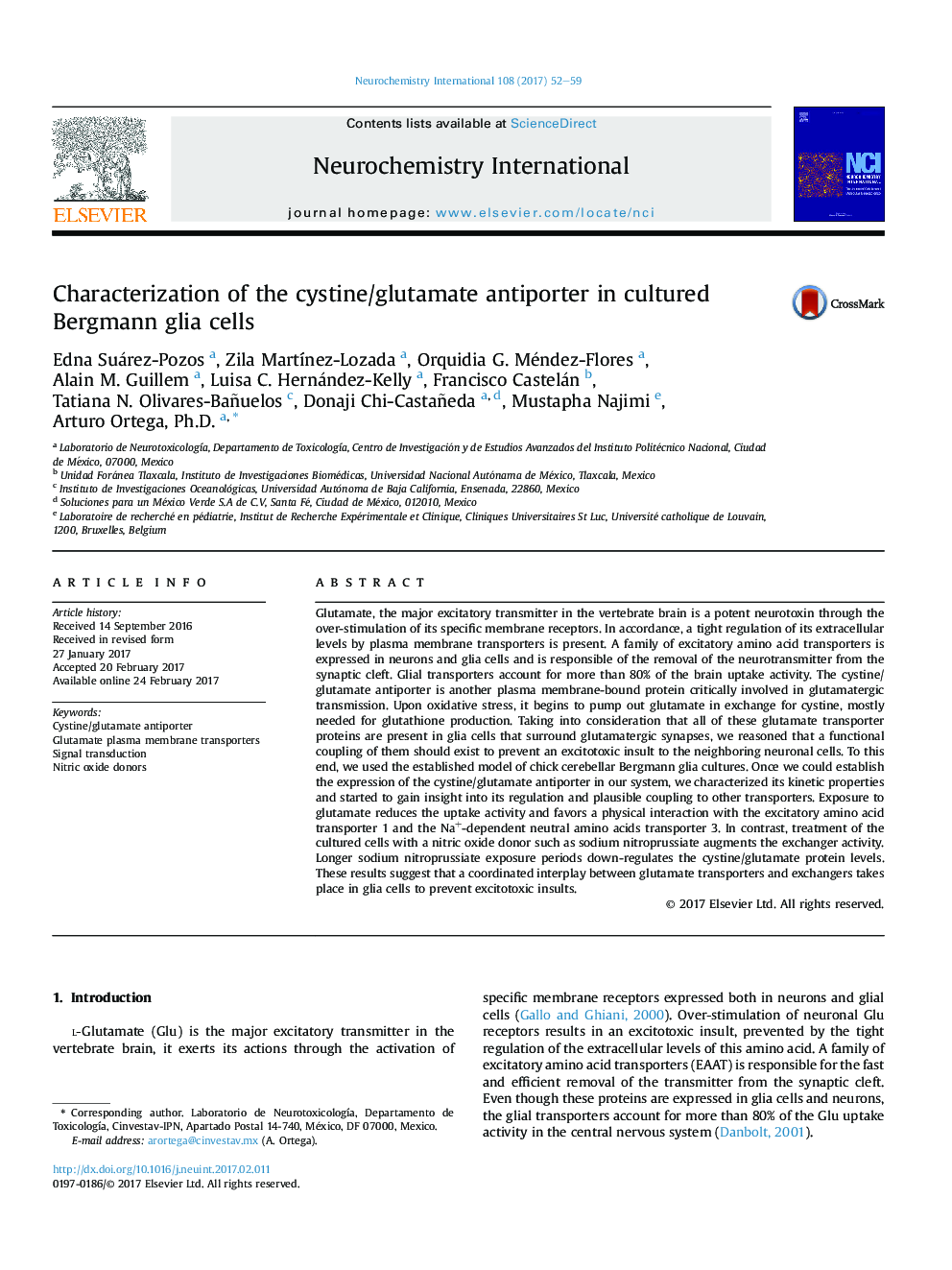| کد مقاله | کد نشریه | سال انتشار | مقاله انگلیسی | نسخه تمام متن |
|---|---|---|---|---|
| 5534699 | 1551267 | 2017 | 8 صفحه PDF | دانلود رایگان |
- Bergmann glia express the cystine/glutamate antiporter.
- An augmentation of the activity and protein levels of the cystine/glutamate antiporter is triggered by a nitric oxide donor.
- Cystine/glutamate antiporter co-immunoprecipitates with GLAST/EAAT1 and SNAT3 in a glutamate-dependent manner.
Glutamate, the major excitatory transmitter in the vertebrate brain is a potent neurotoxin through the over-stimulation of its specific membrane receptors. In accordance, a tight regulation of its extracellular levels by plasma membrane transporters is present. A family of excitatory amino acid transporters is expressed in neurons and glia cells and is responsible of the removal of the neurotransmitter from the synaptic cleft. Glial transporters account for more than 80% of the brain uptake activity. The cystine/glutamate antiporter is another plasma membrane-bound protein critically involved in glutamatergic transmission. Upon oxidative stress, it begins to pump out glutamate in exchange for cystine, mostly needed for glutathione production. Taking into consideration that all of these glutamate transporter proteins are present in glia cells that surround glutamatergic synapses, we reasoned that a functional coupling of them should exist to prevent an excitotoxic insult to the neighboring neuronal cells. To this end, we used the established model of chick cerebellar Bergmann glia cultures. Once we could establish the expression of the cystine/glutamate antiporter in our system, we characterized its kinetic properties and started to gain insight into its regulation and plausible coupling to other transporters. Exposure to glutamate reduces the uptake activity and favors a physical interaction with the excitatory amino acid transporter 1 and the Na+-dependent neutral amino acids transporter 3. In contrast, treatment of the cultured cells with a nitric oxide donor such as sodium nitroprussiate augments the exchanger activity. Longer sodium nitroprussiate exposure periods down-regulates the cystine/glutamate protein levels. These results suggest that a coordinated interplay between glutamate transporters and exchangers takes place in glia cells to prevent excitotoxic insults.
Journal: Neurochemistry International - Volume 108, September 2017, Pages 52-59
